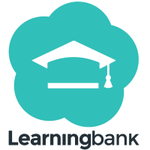Yes, mobile learning software can be accessed from different devices and platforms. This is one of the primary benefits of mobile learning since it allows students to access course materials and participate in activities on their preferred devices, such as smartphones, tablets, or computers. Furthermore, most mobile learning software is compatible with a variety of operating systems, making it readily available to users regardless of device or platform preference.
List of 20 Best Mobile Learning Software
Abara LMS is a Learning Management System designed for Corporates, Training institutions, and eLearning companies. Its mobile-first approach and top-of-the-line features make it the perfect fit for organizations of any size. Its intuitive interface a...Read More Abara LMS
Pocket Study LMS is a Learning Management System that comes with a mobile app and creative teaching approaches to enrich learning. It acts as a unified platform for efficient content distribution in a well-structured layout. Embrace the ease and effe...Read More Pocket Study LMS
Crowd Wisdom is a learning management software that elevates professional education efforts. With advanced capabilities like personalized learning journeys, adaptive assessments, and flexible content delivery, this platform empowers organizations to...Read More Crowd Wisdom
Adobe Connect – solution for virtual sessions that provides extensive control for a personalized and captivating experience. This powerful platform allows for seamless delivery of compelling training sessions, immersive learning experiences, a...Read More Adobe Connect
Tenneo LMS is a learning solution designed for both administrators and learners. Our advanced platform offers four versions - Learn, Learn +, Grow, and Act - to cater to your organizations unique learning needs. With a speedy setup process of just 8...Read More Tenneo LMS
eNyota LMS - the ideal solution for effortless implementation and tracking of virtual training programs. With a user-friendly interface, easy setup, and cloud-based infrastructure, it streamlines the administration process and is compatible with mobi...Read More eNyota LMS
the revolutionary Skills Caravan LXP solution to modernize your organizations learning and development strategy. Leave outdated LMS behind and unlock the full potential of generative AI, advanced analytics, dynamic gamification, social learning, and...Read More Skills Caravan LXP
Tutor LMS is a e-learning platform for teachers. Its sleek and intuitive interface makes course creation a breeze. Students can explore interactive quizzes and track their progress with in-depth analytics, boosting their understanding and retention...Read More Tutor LMS
Byjus is a name in online learning for the Indian school curriculum. Our platform offers top-quality content by renowned educators, along with helpful tips and tricks for each subject. With over 1000 hours of video lectures, unlimited tests, personal...Read More BYJU'S
Simpliv is an advanced online learning platform dedicated to empowering individuals in reaching their personal and professional aspirations. Packed with a comprehensive video library covering a wide range of business concepts and software technology,...Read More Simpliv
Articulate - the premier e-learning authoring tool that takes your courses to the next level. Our user-friendly software allows you to create engaging and interactive courses that captivate your audience. As the go-to choice for online learning and t...Read More Articulate
Instancy the online assessment platform. With its cutting-edge capabilities, this powerful software allows for comprehensive evaluation of learning and identification of improvement areas. With tailored remediation, candidates can enhance their learn...Read More Instancy
Classpro is a online teaching solution for coaching institutes. Seamlessly create and monetize courses, collect payments, conduct live lectures, assign tasks, and conduct mock tests, all within your own branded app. Trusted by over 1000 coaching clas...Read More Classpro
Gurucan is a online platform that streamlines the creation, marketing, and selling of digital courses for individuals and businesses. Its user-friendly interface and comprehensive features make it the top choice for knowledge commerce enterprises. El...Read More Gurucan
EdApp is an innovative microlearning software that allows teams to create and deliver engaging training content with ease. Utilizing AI technology and seamless integrations, EdApp offers a convenient and effective learning experience that can be acce...Read More EdApp
Learningbank LMS is a learning management system that streamlines employee training. With custom courses, real-time progress tracking, and easy integration with your current tools, our platform increases engagement and maximizes learning outcomes for...Read More Learningbank LMS
PlayerLync - an innovative mobile workforce management solution that enables deskless employees to access training, operational processes, and communication tools on-the-go. With offline capabilities, frontline teams can stay connected and have quick...Read More PlayerLync
First introduced as a training platform for the Extended Enterprise, Mindflash offers a simple and intuitive way to create dynamic courses using popular tools like PDFs, Word documents, and PowerPoint presentations. Users can also maintain PowerPoint...Read More Mindflash
Intellum is an innovative software platform designed to enhance learning and engagement. Its flexible platform allows users to create personalized and impactful learning experiences with ease, while providing real-time analytics and seamless integrat...Read More Intellum
Absorb LMS solution for streamlining administrative tasks. With its user-friendly interface, course setup and user management become effortless. Save time and let Absorb LMS handle the busy work, allowing you to focus on what truly matters. Take cont...Read More Absorb LMS
Learn More About Mobile Learning Software
- What Is Mobile Learning Software?
- What Are The Recent Trends In Mobile Learning Software?
- Benefits Of Using Mobile Learning Software
- Important Factors To Consider While Purchasing Mobile Learning Software?
- What Are The Key Features To Look For In Mobile Learning Software?
- Why Do Businesses Need Mobile Learning Software?
- How Much Time Is Required To Implement Mobile Learning Software?
- What Is The Level Of Customization Available In Mobile Learning Software?
- Which Industries Can Benefit The Most From Mobile Learning Software?
- Conclusion
What Is Mobile Learning Software?
Mobile learning software is a digital tool or platform that allows users to access educational content and engage in learning activities via a mobile device such as a smartphone or tablet. This type of software is designed to make learning more accessible and convenient for users, allowing them to learn at any time and from any location. It has grown in popularity in recent years as mobile devices have become more widely used and there is a greater demand for flexible and individualized learning experiences.
One of the most important advantages of mobile learning software is its capacity to deliver a variety of educational resources in different formats, such as movies, interactive modules, and quizzes. This enables learners to interact with the knowledge in a diverse and engaging manner, making the learning process more pleasurable and successful.
Furthermore, mobile learning software frequently adds features like progress monitoring, assessment tools, and collaborative capabilities to improve the entire learning experience. Many mobile learning software solutions are also created with adaptability in mind, which means that the software may modify the difficulty level or pace of the information to match each learner's specific needs and talents.
This content customizing guarantees that learners have a more individualized learning experience, which leads to better information retention and faster progression. Another significant feature of mobile learning software is the capacity to enable on-the-go access to learning resources. This is especially useful for professionals or students who have busy schedules and may not have enough time to study.
They can use mobile learning applications to engage in educational activities during small moments of downtime, such as commuting or waiting for appointments. In addition to these characteristics, there are numerous significant elements to consider while selecting mobile learning software, such as the platform's compatibility with various devices, usability, and availability of technical assistance. It is also necessary to evaluate the software's content and features to ensure that they meet the user's individual learning goals and objectives.
What Are The Recent Trends In Mobile Learning Software?
Mobile learning software has grown in popularity over the last several years due to its convenience and accessibility. As technology advances, so are trends in mobile learning applications.
In this buyer's guide, we'll go over the latest trends in this category to help you make an informed selection when selecting mobile learning software.
1. Personalized And Adaptable Learning: One key development in mobile learning software is the use of personalized and adaptive learning. These tools use AI and machine learning to assess each student's particular needs and learning styles and give tailored learning content. This not only enhances the learning experience, but also boosts engagement and retention.
2. Bite-Sized, Microlearning: Long lectures and hours of studying are no longer the norm. Today's learners desire quick, concise content that can be consumed on the fly. This has resulted in the proliferation of bite-sized and microlearning modules in mobile learning applications. With these brief and targeted lectures, students may quickly comprehend the material and remain engaged.
3. Gamification: Gamification is a trendy trend in mobile learning software. These applications make learning more enjoyable and engaging by introducing game aspects such as points, levels, and awards. Gamification not only keeps learners motivated, but it also improves their ability to retain information.
4. Social Learning: Another emerging trend is the incorporation of social learning aspects into mobile learning software. With the rise of social media, today's learners are more inclined toward collaborative learning. These technologies enable students to interact and share their knowledge and thoughts with their peers, making the learning process more engaging and dynamic.
5. Offline Learning: One of the primary issues about mobile learning software was the requirement for an internet connection. However, with the new trend of offline learning, students can now access the content without requiring an internet connection. This is especially useful for learners in rural regions or with restricted internet access.
Benefits Of Using Mobile Learning Software
Mobile learning software, often known as m-learning software, is a technology that allows students to access instructional materials and activities using mobile devices such as smartphones and tablets. This software has grown in popularity in recent years as mobile devices have increased and there is a greater need for flexible and accessible learning options.
We'll look at the advantages of adopting mobile learning software for educational institutions and individual students.
1. Convenient And Flexible Learning: One of the key advantages of using mobile learning software is the ease and flexibility it provides. Learners can access course materials and complete exercises at their own speed and on their own time, regardless of their location. This is especially useful for working professionals or students with hectic schedules who may not have time to attend typical classroom sessions.
2. Cost-Effective Solution: Mobile learning software is an affordable option for educational organizations and individuals. It reduces the need for actual textbooks and materials, resulting in lower printing and distribution costs. Furthermore, m-learning eliminates the need for students to travel to class, saving money on transportation. This makes mobile learning software an affordable choice for both buyers and vendors.
3. Engaging And Interactive Learning: Mobile learning software that incorporates multimedia and interactive features enhances the learning experience. The program might include movies, quizzes, games, and simulations to make the learning experience more engaging and successful. This is especially advantageous for younger students, who are more used to using technology in their daily lives.
4. Increased Access To Learning: Mobile learning software eliminates geographical constraints, allowing students to access educational materials and courses from anywhere in the world. This is especially useful for students in rural locations or underdeveloped countries, where traditional educational resources may be scarce. It also makes learning more accessible to those with impairments who may face physical difficulties in typical classroom settings.
5. Personalized Learning: Using mobile learning software, learners can tailor their learning experience to their specific needs and preferences. They can select whatever topics or modules to focus on, review information at their own speed, and monitor their progress. This individualized learning strategy has the potential to improve information retention and understanding.
Important Factors To Consider While Purchasing Mobile Learning Software?
When choosing mobile learning software, there are several crucial considerations. These essential characteristics can assist guide your decision-making process and ensure you select the appropriate software for your requirements.
Here are the key factors to consider:
1. User-Friendly Interface: One of the most important considerations when choosing mobile learning software is the user interface. The program should have a simple and straightforward interface that allows users to navigate and interact with the instructional content. Consider using a demo or trial version of the software to see how the interface works and whether it meets your needs and tastes.
2. Compatibility And Technical Requirements: It is critical to consider the technical aspects of the software to verify that it works with your devices and operating systems. various software may have various needs, so be sure your devices and operating systems meet these. Consider whether the software can be accessed offline or requires an internet connection.
3. Customization And Personalization: The finest mobile learning software should include customization and personalization. This means that you can adjust the content to your personal learning requirements, whether you are an individual user or a corporate employee. Look for software that allows you to construct personalized learning routes and track progress for a more effective learning experience.
4. Content Library: Before making a purchase, it is critical to analyze the content library provided by mobile learning software. The content should be high-quality, entertaining, and relevant to your learning objectives. It should also cover a wide range of topics and provide a variety of formats, such as videos, quizzes, and interactive games, to accommodate diverse learning preferences.
5. Accessibility And Support: Before investing in mobile learning software, it is critical to explore the support and accessibility choices available. The program should provide 24-hour customer assistance and a specialized technical team to help with any issues or questions. Additionally, ensure that the program can be accessible from a variety of devices and platforms, allowing you to learn on-the-go without restrictions.
What Are The Key Features To Look For In Mobile Learning Software?
When looking for the best Mobile Learning Software, several critical elements should be examined to create a positive learning experience.
These features are critical to offering a user-friendly and effective platform for learners of all levels.
1. Compatible With Several Devices: The first and most important characteristic to look for in mobile learning software is compatibility with numerous devices. This means you may use the program on any device, including a smartphone, tablet, or laptop, making it convenient and accessible for learners on the go.
2. User-Friendly Interface: A user-friendly interface is essential for providing a favorable learning experience. The software should be straightforward to use, with clear instructions and organized content, making it easier for students to find the information they need.
3. Interactive Learning Tools: The best Mobile Learning Software includes a number of interactive learning tools, such as quizzes, games, and simulations, to engage students and improve their grasp of the material. These technologies make learning more interesting and help students retain material more effectively.
4. Offline Access: One of the primary advantages of adopting mobile learning software is the ability to access it offline. Look for software that provides offline access, which allows students to continue their studies even without an internet connection, making it great for individuals who are constantly on the go.
5. Customizable Information: Another important element to consider is the ability to adapt information based on the needs and preferences of the learners. This guarantees that the content is personalized to match the learners' individual needs, making the learning process more effective.
6. Progress Monitoring And Reporting: Development monitoring and reporting capabilities enable learners to track their development while teachers monitor their performance. This helps to discover areas for development and provides vital information into the course's efficacy.
7. Multi-Language Support: If you have a diverse set of learners, you must choose software that supports multiple languages. This feature allows students to access the content in their preferred language, making it more accessible and effective for all.
8. Cloud-Based Storage: Cloud-based storage is an important feature for mobile learning software since it enables for the simple storing and retrieval of massive volumes of data. This makes it easier for students to access course materials and resources at any time.
9. Security And Data Protection: Data security and protection are critical for all applications, particularly when working with sensitive learner information. Look for software that uses stringent security methods and processes to secure your data from cyber threats.
10. Tech Support: Finally, consider software that provides solid technical assistance to help with any problems or inquiries that may arise. This promotes a smooth learning experience and reduces disturbances during the learning process. By taking these crucial qualities into account, you can make an informed selection about the best Mobile Learning Software for your needs. Keep in mind that each software may provide additional functions, so do your homework and select the one that best meets your learning objectives.
Why Do Businesses Need Mobile Learning Software?
In today's fast-paced corporate world, staying ahead of the competition is critical to success. With the advancement of technology, mobile devices have become an essential component of our daily life. This transformation has also resulted in significant changes in how we learn and consume information. As a result, organizations are using mobile learning software to improve their training and development plans.
Mobile learning software, often known as mLearning, refers to the use of mobile devices like smartphones and tablets for educational purposes. This type of software allows employees to access training materials and courses at any time and from any location, making learning more easy and accessible. One of the key reasons why firms use mobile learning software is to stay up with ever-changing industry requirements.
With the rapid changes in technology and market trends, traditional training approaches are no longer adequate to provide employees with the necessary skills and knowledge. Mobile learning software provides bite-sized, on-the-go learning information that is easily updated to reflect the latest industry advancements. Furthermore, mobile learning software supports a culture of continual learning in the workplace.
Employees are encouraged to engage in self-directed learning, which leads to personal and professional progress, because training materials are easily accessible to them. This improves staff morale, work satisfaction, and overall performance. Aside from meeting industry standards and encouraging continual learning, mobile learning software can help firms save time and money.
Traditional training techniques frequently entail preparing physical classrooms, printed materials, and travel fees. All of these costs can be reduced using mobile learning software, making training and development more affordable and efficient. Furthermore, mobile learning software includes a number of features such as gamification, evaluations, and real-time feedback, making learning more engaging and participatory.
This not only improves the learning experience, but also boosts knowledge retention. Finally, in today's remote work culture, mobile learning software is an essential tool for providing regular and effective training to distant personnel. With the capacity to access training materials from anywhere, employees may receive the same quality of training regardless of their location, resulting in a more skilled and productive staff.
How Much Time Is Required To Implement Mobile Learning Software?
The implementation time for mobile learning software varies depending on a number of factors, including your organization's size and complexity, the type and functionality of the software, and the level of customization necessary. On average, it can take between a few weeks and a few months to fully integrate a mobile learning software solution. When predicting implementation time, it is critical to consider your organization's readiness.
Before you begin installing the software, you must ensure that your infrastructure is in place, your workers are trained and prepared for the shift, and you have a well-defined plan in place. Next, the sort of mobile learning software you select will affect the implementation time. If you choose a cloud-based solution, the setup and configuration procedure may be faster than using on-premise software, which requires installation and integration with your existing systems.
Furthermore, the features and functionality you demand from the software can influence the time it takes to create it. For example, if you wish to tailor the program to your specific learning objectives and branding, it may take longer to configure and test these changes. It's also important to assess how much material and data you'll need to migrate to the new program. The larger the data set, the longer it may take to transfer and assure compatibility with the new system.
What Is The Level Of Customization Available In Mobile Learning Software?
Mobile learning software provides variable levels of customisation to match the unique needs and preferences of each user. These levels of customisation might range from simple changes to extensive and personalized features. At its most basic, mobile learning software may allow users to customize the color scheme and layout of the interface to create a more visually appealing and personalized experience.
This may also feature the opportunity to incorporate company logos and branding for a more professional appearance. Moving along the customisation spectrum, certain mobile learning software may allow you to design unique courses and content, resulting in a more personalized learning experience. This can include the ability to add company-specific content or alter current courses to better meet the organization's goals and learning objectives.
Another level of customisation is the ability to create tailored learning pathways for individuals or groups. This feature provides each user with a personalized learning experience depending on their skill level, interests, and job function. It also gives administrators the ability to assign certain courses or learning resources to specific groups of users. Some mobile learning software may also have advanced customization features, such as the ability to interact with current learning management systems or third-party applications.
By combining diverse learning resources into a single platform, a more seamless and personalized learning experience is achieved. Overall, the level of customization offered by mobile learning software varies substantially depending on the platform and its characteristics. When comparing mobile learning software choices, purchasers should examine their individual demands as well as the level of customization required by their organization.
Which Industries Can Benefit The Most From Mobile Learning Software?
Mobile learning software is increasingly becoming a popular choice among firms trying to improve their staff training and development programs. Whether you run a small business or a large enterprise, this powerful technology has the ability to transform how your staff learn and remember information. But which industries will profit the most from mobile learning software?
Let's have a closer look.
1. Healthcare: The healthcare industry is continually changing, with new treatments, procedures, and technology emerging at a rapid pace. Mobile learning software can give healthcare practitioners access to current training materials, patient-specific information, and real-time communication with coworkers. This not only improves the quality of patient care, but also increases the overall efficiency of the healthcare system.
2. Retail: As e-commerce grows and consumers increasingly utilize mobile devices, the retail business faces new concerns. Mobile learning software may teach retail personnel about product knowledge, customer service, and sales strategies, boosting their overall performance and guaranteeing a consistent customer experience across all locations.
3. Manufacturing: Employees in the manufacturing industry must have a high level of technical knowledge and skills. Mobile learning software can give these staff on-demand access to training materials, safety rules, and equipment instructions. This not only boosts worker productivity but also reduces errors on the production line and improves overall safety.
4. Education: In the digital age, traditional classroom instruction is no longer the sole choice. Mobile learning software can help students learn more effectively by providing interactive and tailored experiences. It also enables teachers to monitor students' progress and provide rapid feedback, resulting in a more efficient and effective learning environment.
5. Financial Services: The financial services industry is heavily regulated, thus employees must always stay up to date on industry changes and compliance standards. Mobile learning software may give employees with timely and relevant training materials, track their progress, and issue certification upon completion. This guarantees that staff are up to date on industry norms and laws.
Conclusion
In conclusion, finding the right mobile learning software for your organization can greatly enhance employee development and overall business success. As seen in this buyer's guide, there are various factors to consider when making this important decision. Firstly, it is important to assess your organization's specific needs and goals in terms of employee training and development.
This will help narrow down the features and functionalities that are crucial for your mobile learning software. Next, consider the user experience and interface of the software to ensure it is intuitive and easy for employees to use. Additionally, checking for compatibility with different devices and operating systems is important for a seamless learning experience. Another key aspect to consider is the learning content and resources offered by the software.
Look for a platform that provides a diverse range of materials, including multimedia and interactive elements, to keep employees engaged and motivated. Additionally, don't overlook the importance of analytics and reporting capabilities. Being able to track and measure the effectiveness of the software is crucial for determining its impact and ROI. Lastly, consider the reliability, security, and customer support of the software provider. Ensuring the software is regularly updated and has strong security measures in place will protect your organization's data and sensitive information.
In summary, carefully evaluating these factors will help you make an informed decision when selecting a mobile learning software for your organization. Take the time to research, compare and test different options to find the best fit for your organization's unique needs. With the right mobile learning software, you can unlock the full potential of your employees and drive your business towards success.
Mobile Learning Software FAQ's
Can Mobile Learning Software Be Accessed Across Multiple Devices And Platforms?
Is Mobile Learning Software Future-Proof And Adaptable To Emerging Technologies Like AI, Blockchain Or IoT?
"Yes, most modern mobile learning software is built to be future-proof and adaptable to new technologies like AI, blockchain, and IoT. These systems are constantly updated to include new features and integrations, allowing them to stay up with the ever-changing technology world.
This guarantees that learners have access to the most current and relevant technologies, resulting in a more immersive and successful learning experience. Furthermore, many Mobile Learning program suppliers allow for customization, which means that businesses can modify the program to their specific needs, including incorporating emerging technology."
Is There A Free Trial Offered To Assess Mobile Learning Software Before Committing?
Several mobile learning software suppliers offer free trial periods so that consumers can evaluate the platform before committing. This enables potential users to try the software's features and functionalities and assess whether they meet their specific requirements.
It is critical to take advantage of these trial periods to ensure that the mobile learning software meets your organization's training and development needs. Keep in mind that trial periods might vary in length, so make the most of it within the timeframe provided.
Does Mobile Learning Software Offer Data Security Features And Meet Regulatory Compliance Standards?
Mobile learning software includes strong data security safeguards to protect the safety of sensitive information. The majority of trustworthy software solutions use encryption techniques and secure servers to protect data from unauthorized access.
Furthermore, these platforms adhere to regulatory standards such as GDPR, HIPAA, and FERPA to meet the compliance needs of various businesses. This not only protects student data, but it also helps enterprises comply with data protection requirements.
Can Mobile Learning Software Integrate Seamlessly With Existing Tools And Platforms?
Yes, most mobile learning software systems are intended to work smoothly with current tools and platforms, such as Learning Management Systems (LMS) and Human Resources Information Systems (HRIS). This provides for a smooth data transfer and makes it easier to manage and track staff training. Furthermore, many mobile learning solutions include API integration, which enables customization and integration with other systems as needed.






















